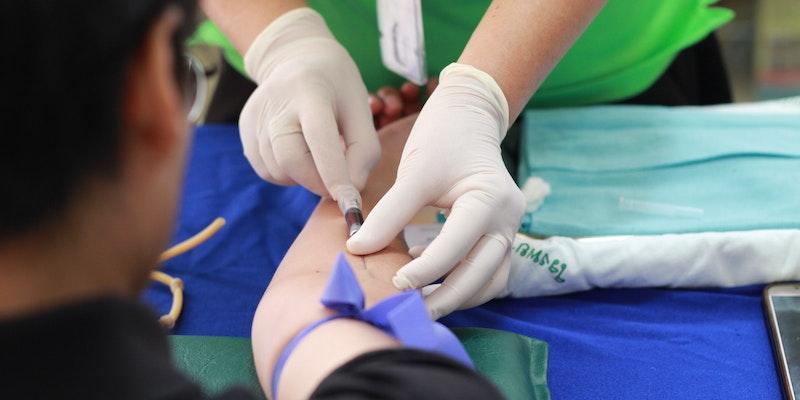Lyme Disease, scientifically termed Borreliosis, is a vector-borne disorder long recognized but only adequately characterized in the late 20th century. First identified in the U.S. in 1977 in the town of Old Lyme, Connecticut, it has since been discovered to prevail in various regions worldwide, including Europe and Asia. With its primary transmission vector being the black-legged tick, also known as the deer tick, this disease poses substantial risks due to its subtle onset and potential long-term implications.
Etiology: The Causative Agent
Bacterial Origins
Unusual symptoms of Lyme disease are primarily attributed to the spirochete bacterium Borrelia burgdorferi (B. burgdorferi). Spirochetes are known for their unique spiral shape and distinctive motility patterns. Within this genus, several strains can cause varying manifestations of Lyme disease, but B. burgdorferi remains the primary culprit in the United States.
Role of the Tick Vector
Deer ticks, scientifically termed Ixodes scapularis, act as the primary vector for the unusual symptoms of Lyme disease. Their lifecycle comprises four stages: They have four stages: egg, larva, nymph, and adult. Humans are most at risk during the nymph stage due to their tiny stature and increased activity in warmer months.
- Larval Feeding Habits: Once developed from eggs, larvae graze on small animals, especially the white-footed mouse, a major B. burgdorferi reservoir. If the mammal is infected, the larva contracts the bacterium during this blood meal.
- Nymph Transmission: After molting and advancing to the nymph stage, these ticks seek larger hosts, including humans. If they had contracted the bacterium during their larval meal, they could transmit it to humans.
- Adult Tick Role: Adult deer ticks contribute to transmitting Lyme disease but are less efficient than nymphs, primarily due to their larger size, making them easier to detect and remove.
Epidemiology and Geographic Distribution
U.S. Concentrations
The United States witnesses distinct pockets where Lyme disease diet is more prevalent. The dense forests, climate conditions, and animal reservoirs make these areas conducive to the proliferation of deer ticks.
- Northeastern Focus: From Virginia to Maine, Lyme disease cases have surged. This concentration owes itself to the vast stretches of forested areas, providing a natural habitat for ticks and their hosts.
- Midwest Outbreaks: States like Wisconsin and Minnesota have reported increased Lyme disease incidents. This pattern is associated with wooded areas and specific agricultural practices favoring tick proliferation.
- West Coast Concerns: While less commonly associated with Lyme disease, the northwestern coast, including areas of Northern California and Oregon, has seen tick-related transmissions. This is attributed to a different tick species, Ixodes pacificus.
Global Reach
Lyme disease diet is not confined to the U.S. alone. European nations, particularly in central and eastern parts, have reported cases. Despite reporting fewer incidents, Asia is not immune, with some instances detected in northern regions like China and Mongolia.
How Is Lyme Disease Transmitted?
Primary Vector and Transmission Route
As previously highlighted, the deer tick is the primary vessel for Lyme disease transmission. The tick doesn't instantly transfer the bacterium for successful communication with a host. It usually takes time, making early detection and removal paramount.
- Tick Attachment Duration: Ticks must usually remain attached for 36 to 48 hours before the bacterium is effectively transmitted. This period is crucial as the bacterium requires a specific amount of time within the tick's gut before it migrates to its salivary glands and into the host.
- Bacterial Journey: B. burgdorferi doesn't reside in the tick's saliva. When a tick begins feeding, the bacterium migrates from the gut to the salivary glands, facilitating its transfer.
Human Risk Factors
Certain behaviors and environmental factors increase the risk of Lyme disease exposure:
- Outdoor Activities: Engaging in outdoor pursuits such as hiking, hunting, or camping in wooded areas can elevate the risk.
- Residence: Living or spending significant time in areas known for high Lyme disease prevalence, especially if these areas have tall grasses or a high population of deer and rodents, can increase the chances of tick encounters.
- Seasonal Considerations: Late spring and summer are peak times for nymphal tick activity, corresponding to the time most Lyme disease cases are reported.
Lyme Stages and Symptoms
In its progression, Lyme disease can present various symptoms based on its stage. Understanding these stages and their accompanying symptoms can aid healthcare professionals in timely diagnosis and management.
Stage 1: Early Localized Lyme Disease
This initial stage surfaces days to weeks following the tick bite.
- Flu-like Symptoms: Patients commonly present with non-specific symptoms that can easily be mistaken for influenza. These include:
- Fever and chills
- General malaise or ill-feeling
- Headaches
- Muscle and joint pains
- Stiff neck
- Rash-Erythema Migrans: This is one of the hallmark symptoms of Lyme disease in its early stage. The rash typically starts as a red patch, gradually expanding, often reaching diameters greater than 7 inches. A central clearing might appear at the tick bite site, giving it a distinctive "bull's eye" appearance.
Stage 2: Early Disseminated Lyme Disease
This stage usually emerges weeks to months after the tick bite incident.
- Neurological Symptoms: As the bacteria disseminate, neurological manifestations become evident:
- Numbness or tingling, particularly along nerve distributions
- Paralysis or muscle weakness, notably facial nerve palsy
- Meningitis Indicators: The involvement of the protective layers of the brain and spinal cord can result in symptoms like severe headaches, a stiff neck, and fever.
- Cardiac Concerns: Heart-related complications might arise, leading to symptoms such as:
- Skipped heartbeats or palpitations
- Lightheadedness
- Fainting episodes
Stage 3: Late Disseminated Lyme Disease
This advanced stage can manifest months or even years after the initial infection.
- Joint Afflictions: Periodic swelling in large joints, especially the knees, is common. This swelling can recur over several months.
- Neurological Complications: Neuropathy or nerve involvement can lead to persistent numbness, tingling, or even pain in the extremities.
Diagnostic Strategies
Lyme disease diagnosis involves a blend of clinical examination, patient history, and specific laboratory tests to confirm the presence of the Lyme-causing bacteria or its antibodies.
Clinical Evaluation
- Symptom Assessment: Early recognition of the typical symptoms, especially the erythema migrans rash, can point towards a probable Lyme disease diagnosis.
- History Gathering: A detailed travel or activity history, especially in endemic regions, further strengthens the clinical suspicion.
Laboratory Testing: The Two-Tiered Approach

The CDC recommends two steps for laboratory confirmation:
- Enzyme-linked immunosorbent assay (ELISA): ELISA tests for B. burgdorferi antibodies. Its sensitivity depends on the illness stage.
- Immunoblot or Western Blot: Used as a follow-up to a positive or indeterminate ELISA test, it offers a more specific evaluation for Lyme antibodies.
Considerations in Testing
- Early Infection Challenges: Since antibody formation can take time, tests conducted too early might yield false negatives.
- Monitoring Post Tick Bite: Vigilance for 30 days post a tick bite, especially for rashes or flu-like symptoms, is recommended as many patients don't recall a rash.
Therapeutic Interventions

Effective Lyme disease treatment largely hinges on its timely diagnosis and the disease stage.
Antibiotic Choices for Early Stages
For patients diagnosed in the initial stages of Lyme disease:
- Oral Regimens: Antibiotics such as doxycycline, amoxicillin, and cefuroxime are preferred. Typically, a course spanning 10 to 14 days suffices.
- Considerations: Choice often depends on the patient's age, medical history, and potential allergies. For instance, doxycycline is generally not given to children below eight years.
Management of Advanced Lyme Disease
For patients diagnosed in the later stages:
- Extended Oral Therapy: The same antibiotics used in early stages might be prescribed, but for extended durations, often up to a month.
- Intravenous Options: In cases of severe symptoms or complications like refractory arthritis or neurological involvement, intravenous antibiotic treatments like ceftriaxone may be warranted.
Post-Treatment Recommendations
- Monitoring: Even post-treatment, patients are advised to watch for lingering or new symptoms, indicating potential complications or the need for extended therapy.
- Symptomatic Relief: Symptomatic treatments like pain relievers might be prescribed for persistent joint pains or other discomforts.
Lyme Disease Cure Rate
With prompt diagnosis and treatment, Lyme disease boasts a cure rate exceeding 99%. Yet, complications might arise involving the joints, heart, or nervous system, especially when left untreated. Some patients experience post-Lyme disease syndrome, with lingering symptoms post-therapy.




